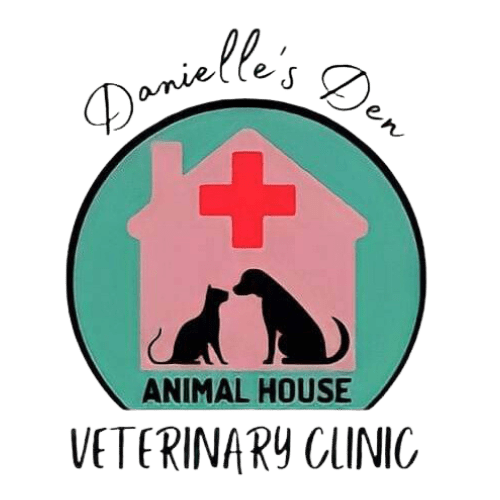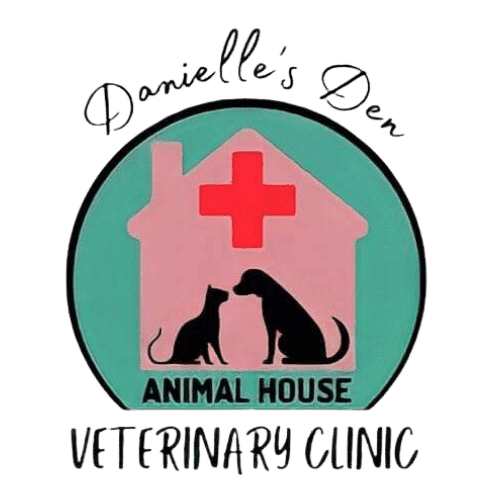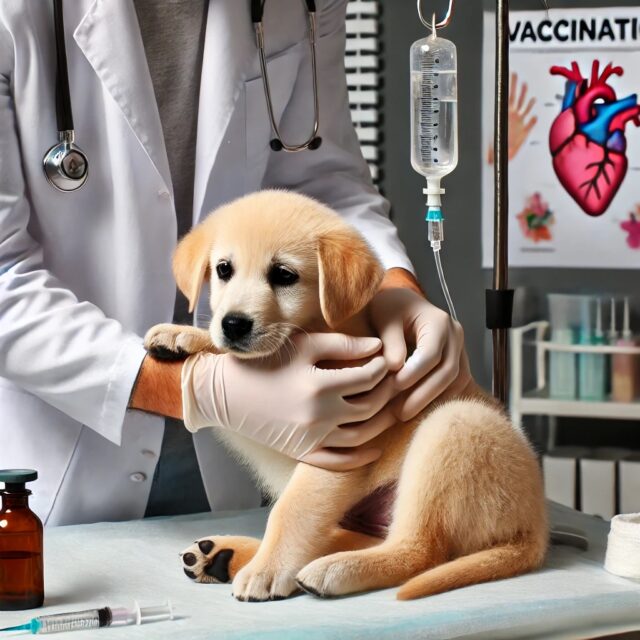How CanineParvovirus Affects Puppies and Why They're Most at Risk
Canine Parvovirus (CPV) is a highly contagious and deadly virus that affects dogs, particularly young puppies. While adult dogs can contract the virus, puppies are at a significantly higher risk due to their developing immune systems and incomplete vaccination status. Understanding why puppies are more vulnerable to CPV and how it affects them is crucial for any pet owner. This knowledge can help ensure that you take the right precautions to protect your furry friend during their most formative months.
1. What Is Canine Parvovirus?
Canine Parvovirus is a viral infection that primarily affects the gastrointestinal system of dogs. It is known for its rapid spread and severe symptoms, especially in puppies. There are two primary forms of CPV: intestinal and cardiac. The intestinal form, which is more common, attacks the digestive system, leading to vomiting, diarrhea, and dehydration. The cardiac form affects the heart muscles and is rarer but often fatal in very young puppies. CPV spreads through direct contact with infected dogs or through contaminated environments, such as kennels, parks, or even on clothing and shoes.
2. Why Puppies Are at Higher Risk
Underdeveloped Immune System
Puppies have immature immune systems that are not yet fully capable of fighting off infections like CPV. Unlike adult dogs, whose immune systems have had time to strengthen and adapt, puppies are particularly susceptible to the virus as their bodies are still learning to defend against pathogens.
Maternal Antibodies
When puppies are born, they receive some level of immunity from their mothers through antibodies. However, this protection is temporary and begins to fade as the puppies grow older, usually around 6-12 weeks. During this vulnerable period, when maternal antibodies are declining and before vaccinations take full effect, puppies are at a greater risk of contracting CPV.
Lack of Vaccination or Incomplete Vaccination
One of the primary reasons puppies are more susceptible to CPV is their incomplete vaccination status. Puppies receive their first CPV shot between 6-8 weeks of age, followed by several booster shots. If a puppy has not yet completed this vaccination series or has not been vaccinated at all, they are highly vulnerable to contracting the virus.
3. How Canine Parvovirus Affects Puppies
Symptoms in Puppies
The symptoms of CPV in puppies can be severe and often include vomiting, diarrhea (often bloody), extreme lethargy, fever, and rapid weight loss. Because puppies are smaller and their bodies are still developing, they can become dangerously dehydrated much faster than adult dogs, making the virus even more lethal in young dogs.
Impact on the Digestive System
CPV specifically targets the cells in a dog’s intestines, damaging the protective lining and leading to severe gastrointestinal distress. Puppies with CPV experience dehydration and nutrient loss due to uncontrollable vomiting and diarrhea, which can quickly become life-threatening without treatment.
Immune System Suppression
The virus weakens the immune system, leaving puppies vulnerable to secondary infections. This, combined with the damage CPV does to the intestines, can make recovery difficult without immediate medical intervention.
4. The Importance of Early Detection
Recognizing Early Signs
Early detection of CPV is critical in puppies, as prompt treatment can significantly improve their chances of survival. Pet owners should be vigilant for early symptoms like vomiting, lethargy, and diarrhea and seek veterinary care at the first signs of illness.
High Mortality Rate
Unfortunately, the mortality rate for untreated puppies with CPV is very high. Puppies who do not receive immediate medical attention are at a much greater risk of death compared to adult dogs, who may have stronger immune systems and better defenses against the virus.
5. Prevention: How to Protect Your Puppy
Vaccination Protocol
The most effective way to protect your puppy from CPV is through vaccination. Puppies should receive their first CPV vaccine between 6-8 weeks of age, followed by booster shots every three to four weeks until they are 16-20 weeks old. Completing the entire vaccination series is essential to ensure your puppy is fully protected.
Avoiding High-Risk Areas
Until your puppy has completed their vaccinations, it’s important to avoid taking them to high-risk areas like dog parks, kennels, or any place with a large concentration of dogs. These environments can harbor the virus, putting your puppy at risk of exposure.
Hygiene and Disinfection
CPV can survive in the environment for months, so it’s essential to keep your home and yard clean if your puppy has been exposed to or diagnosed with CPV. Using proper disinfectants that can kill the virus is important to prevent its spread.
Diet and Nutrition
Maintaining a healthy diet is crucial for your puppy’s immune system. Providing high-quality, nutrient-rich food helps bolster their defenses, giving them a better chance to fight off infections, including CPV.
6. What to Do if Your Puppy Contracts Parvovirus
Immediate Action
If you suspect your puppy has contracted CPV, it’s essential to act fast. Take your puppy to a veterinarian immediately, as early intervention can make a significant difference in their chances of survival.
Treatment Options
Treatment for CPV typically involves hospitalization, where your puppy will receive intravenous fluids, electrolytes, and medications to control vomiting and diarrhea. While there is no direct cure for the virus, these treatments help manage symptoms and give the puppy’s body time to fight off the infection.
Post-Recovery Care
After surviving CPV, puppies will need special care at home to ensure they fully recover. This includes maintaining a strict diet, providing plenty of rest, and monitoring them for any signs of relapse. It’s also important to keep them away from other dogs until they are fully recovered to prevent further spread of the virus.
Puppies are particularly vulnerable to Canine Parvovirus due to their underdeveloped immune systems, waning maternal antibodies, and incomplete vaccinations. However, with proper prevention methods, including timely vaccinations and careful avoidance of high-risk areas, pet owners can significantly reduce the chances of their puppies contracting CPV. If a puppy does become infected, early detection and prompt veterinary care are critical in improving their chances of survival. By staying informed and proactive, you can protect your puppy and help ensure they grow into a healthy, happy adult dog.
Frequently asked questions:
Canine Parvovirus (CPV) is a highly contagious viral infection that affects dogs, primarily targeting the digestive system. It can cause severe symptoms such as vomiting, diarrhea, and dehydration, especially in puppies. Without prompt treatment, CPV can be fatal.
Puppies are at higher risk because their immune systems are still developing, and they may not yet have received a full course of vaccinations. They also rely on maternal antibodies for protection in their early weeks, but this temporary immunity fades, leaving them vulnerable until fully vaccinated.
Common symptoms include vomiting, severe diarrhea (often bloody), lethargy, fever, and rapid weight loss. These symptoms can quickly lead to dehydration and nutrient loss, making the situation life-threatening without immediate medical care.
The best protection is ensuring your puppy is vaccinated according to the recommended schedule. Avoid taking your puppy to high-risk areas like dog parks or kennels until they have
Puppies should receive their first vaccination against CPV at around 6-8 weeks of age, with booster shots every three to four weeks until they are 16-20 weeks old. This vaccination schedule is crucial for complete protection.
CPV is spread through direct contact with infected dogs or contaminated objects like food bowls, leashes, or even shoes and clothing. The virus can also live in the environment for months, which makes it highly contagious.


